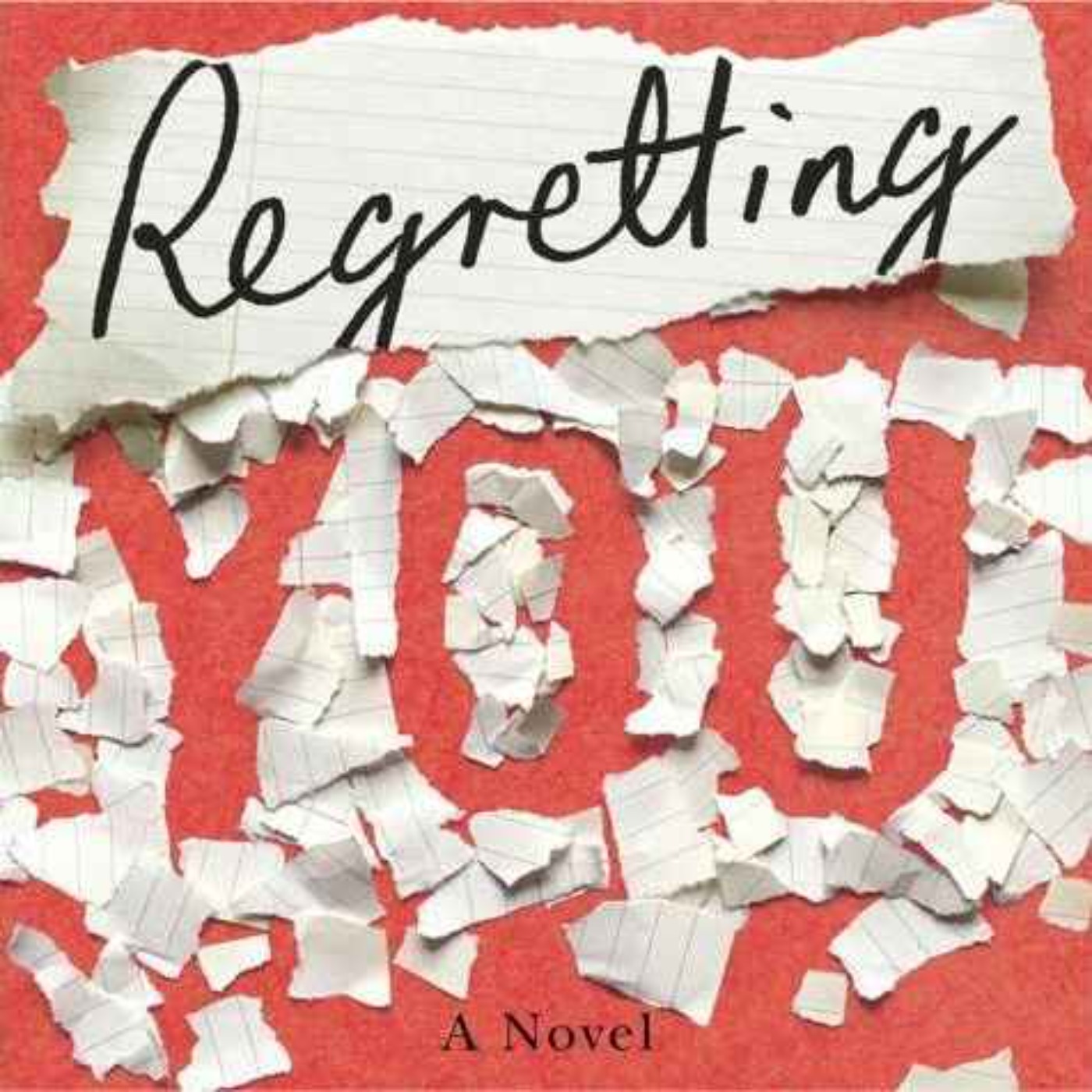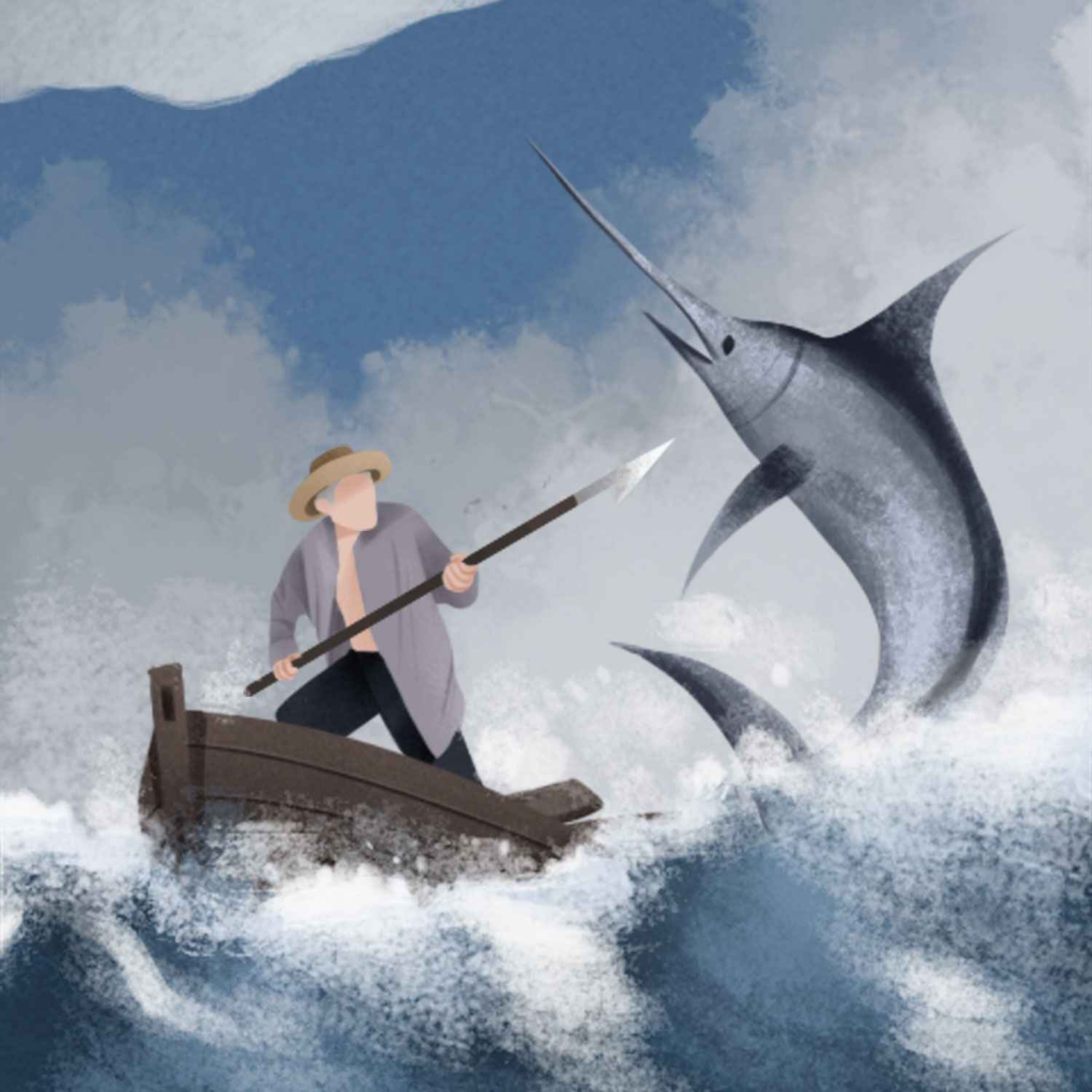Share

Bookey En
Whimsical Adventures with The Little Prince
Antoine de Saint-Exupéry (1900-1944) was a French writer and aviator known for his famous novella, "The Little Prince" ("Le Petit Prince"). Born in Lyon, France, Saint-Exupéry developed a passion for aviation at a young age and went on to become a pioneering pilot. He worked as a commercial airline pilot, flying mail routes across Africa and South America.
During World War II, Saint-Exupéry served as a reconnaissance pilot for the French Air Force. He wrote about his experiences in the war and the importance of aviation in several of his works. However, it was "The Little Prince," published in 1943, that brought him worldwide acclaim and remains his most well-known work.
"The Little Prince" is a philosophical tale that explores themes such as love, friendship, and the complexities of human nature through the eyes of a young prince who lives on a small asteroid. It has been translated into numerous languages and continues to be widely read and cherished by readers of all ages.
Tragically, Antoine de Saint-Exupéry's life was cut short when he disappeared while flying a reconnaissance mission over the Mediterranean Sea in 1944. His body was never recovered, but his legacy as a talented writer and inspirational aviator lives on through his works and their enduring popularity.
Chapter 2:What the rose means to the Little Prince
To the Little Prince, the rose holds a significant meaning. It represents love, beauty, and vulnerability. The rose is the first character introduced in the story and becomes the Little Prince's main companion on his journey. At first, he is captivated by her elegance and uniqueness. However, the rose's demands for attention and affirmation cause him to question their relationship.
The rose symbolizes love because the Little Prince cares deeply for her. He waters and protects her, tending to her needs with great dedication. Through this, the rose also represents the fragility of love and the importance of nurturing relationships.
Beauty is another aspect associated with the rose. The Little Prince admires her beauty, cherishing her delicate petals and sweet fragrance. The rose's presence adds a sense of wonder and enchantment to the prince's adventures.
However, the rose's vulnerability highlights the complexities of love. She is easily hurt and constantly seeks reassurance from the prince. This dependence makes him question the authenticity of her feelings and leads him to explore other planets, hoping to find a more sincere rose.
Chapter 3:quotes about The Little Prince
"It is only with the heart that one can see rightly; what is essential is invisible to the eye."
"And now here is my secret, a very simple secret: It is only with the heart that one can see rightly; what is essential is invisible to the eye."
"Grown-ups never understand anything by themselves, and it is tiresome for children to be always and forever explaining things to them."
"You become responsible, forever, for what you have tamed."
"A goal without a plan is just a wish."
"Well, I must endure the presence of two or three caterpillars if I wish to become acquainted with the butterflies."
"All grown-ups were once children... but only few of them remember it."
More episodes
View all episodes

The Weight of Regret: A Journey of Love and Loss in Colleen Hoover's 'Regretting You'
05:08Chapter 1:Summary of Regretting You"Regretting You" by Colleen Hoover tells the story of a mother-daughter duo, Morgan and Clara, who are both dealing with the aftermath of a tragic loss. When Morgan's husband and Clara's father suddenly dies in a car accident, their lives are turned upside down. As they both struggle to come to terms with their grief, they also find themselves at odds with each other as they navigate their new reality.The novel explores themes of love, loss, grief, and forgiveness as Morgan and Clara try to find a way to move forward while also holding onto the memories of their loved one. Through alternating perspectives, readers get a glimpse into the inner thoughts and emotions of both Morgan and Clara as they navigate their grief and try to understand their relationship with each other.Chapter 2:the meaning of Regretting YouThe story follows a mother and daughter whose lives are turned upside down after a tragic accident. As they navigate grief and try to move forward, they must confront past mistakes and regrets in order to find healing and forgiveness. It ultimately explores the power of love and the importance of embracing second chances. The title "Regretting You" likely refers to the characters coming to terms with their regrets and ultimately finding hope and redemption in the midst of their pain.Chapter 3:Regretting You chaptersChapter 1: The novel opens with the protagonist, Morgan Grant, finding out that her husband Chris has been killed in a car accident. She is devastated by the news, especially because she had just found out that she is pregnant.Chapter 2: As Morgan tries to come to terms with Chris's death, she also has to deal with her strained relationship with her seventeen-year-old daughter, Clara. The two of them have been growing apart ever since Clara started dating a boy named Miller.Chapter 3: Morgan and Clara attend Chris's funeral, where Morgan meets his younger brother, Jonah. Despite her grief, she is drawn to Jonah's easygoing personality and good looks.Chapter 4: Morgan struggles to cope with her grief and her conflicting feelings for Jonah. She is also trying to navigate her relationship with Clara, who is angry and distant following her father's death.Chapter 5: Morgan attends a therapy session with Clara, where they both open up about their feelings and try to work through their issues. Morgan also starts to develop a deeper connection with Jonah.Chapter 6: Morgan and Jonah grow closer and begin spending more time together. However, Morgan is still grappling with feelings of guilt and betrayal over her attraction to her late husband's brother.Chapter 7: As Morgan and Jonah's relationship deepens, Clara continues to rebel and push her mother away. Morgan realizes that she needs to confront Clara about the truth of her relationship with Jonah. Chapter 8: Morgan finally tells Clara about her feelings for Jonah, and Clara reacts badly. She feels betrayed by her mother and struggles to come to terms with the new dynamic in their family.Chapter 9: Morgan and Clara's relationship becomes even more strained, leading Morgan to question whether she made the right decision in pursuing a relationship with Jonah. She must now reconcile her feelings for Jonah with her responsibilities as a mother.Chapter 10: As Morgan and Clara navigate their new reality, they both struggle with their own regrets and insecurities. They must learn to communicate and support each other in order to move forward and heal from the past.
Exploring Passion and Intimacy: A Journey through Mating in Captivity
06:21Chapter 1:Summary of Mating in Captivity"Mating in Captivity" by Esther Perel explores the conflict between intimacy and desire within relationships. Perel argues that intimacy, which is based on emotional closeness and security, often inhibits desire, which thrives on mystery and excitement. She suggests that maintaining a balance between intimacy and desire is essential for a successful and fulfilling relationship. Perel also discusses the importance of maintaining individuality and autonomy within a relationship, as well as the role of fantasy and imagination in maintaining passion. Overall, the book offers insight and advice on navigating the complexities of modern relationships and addressing the challenges of maintaining desire in a long-term partnership.Chapter 2:the meaning of Mating in Captivity"Mating in Captivity" by Esther Perel explores the complex dynamics of maintaining desire and intimacy in long-term monogamous relationships. Perel challenges the commonly held belief that passion and stability are incompatible in a romantic partnership, and suggests that it is possible to have both by understanding and cultivating a balance between security and excitement. She delves into topics such as communication, autonomy, sexual desire, and the role of mystery and distance in a relationship, offering insights and practical advice for couples seeking to cultivate a deeper connection and maintain a fulfilling and passionate relationship. Overall, the book encourages readers to embrace the complexities of intimacy and explore new ways to keep desire alive in a committed partnership.Chapter 3:Mating in Captivity chapters1. IntroductionIn the introduction, Esther Perel introduces the concept of the book: exploring the tensions between love and desire, intimacy and passion in long-term relationships.2. The Paradox of Intimacy and SexPerel discusses the tension between intimacy and desire in long-term relationships, noting that the closeness required for intimacy can sometimes inhibit desire.3. The Cult of the Romantic ChildThis chapter explores the idea that in intimate relationships, people often seek to be taken care of like a child, rather than equal partners.4. The Pitfalls of Modern IntimacyPerel discusses how modern relationships often prioritize emotional intimacy over passion and desire, leading to a lack of sexual excitement.5. Domestic BlissThis chapter delves into the challenges of maintaining desire and passion in the context of domesticity and routine.6. Erotic IntelligencePerel introduces the concept of erotic intelligence, the ability to balance the conflicting needs of security and adventure, intimacy and excitement in a relationship.7. Rethinking FidelityPerel challenges conventional notions of fidelity, arguing that emotional infidelity can be just as damaging to a relationship as physical infidelity.8. Toward EroticismIn the final chapter, Perel explores practical strategies for cultivating desire and passion in long-term relationships, including embracing mystery and maintaining a sense of individual identity within the relationship.
Jane Eyre: A Tale of Resilience and Redemption
03:12Chapter 1:What's the Jane Eyre "Jane Eyre" is a classic novel written by Charlotte Brontë. It was first published in 1847 and has since become one of the most widely read and enduring works of English literature. The story follows the life of Jane Eyre, a young orphan who faces numerous challenges and struggles as she grows into adulthood.The novel is primarily a Bildungsroman, meaning it focuses on Jane's moral and psychological development as she navigates through various social and personal conflicts. Jane's journey takes her from her oppressive childhood at Gateshead Hall to Lowood School, where she endures harsh conditions, and eventually to Thornfield Hall as a governess, where she falls in love with her employer, Mr. Rochester.Throughout the story, Jane grapples with questions of love, morality, independence, and social class. She embodies themes of female independence, self-respect, and the struggle for equality in a patriarchal society. The novel is renowned for its strong characterization, vivid descriptions, and compelling narrative, making it a beloved work of literature that continues to resonate with readers today. Chapter 2:Who wrote Jane Eyre Jane Eyre is a classic novel written by Charlotte Brontë. First published in 1847, it tells the story of a young orphaned girl named Jane, who endures various hardships and injustices throughout her life. Brontë's powerful and introspective narrative explores themes of love, independence, gender roles, and social class. The novel showcases Jane's journey from her abusive childhood to her adulthood as a governess, where she forms a passionate and complex relationship with the brooding Mr. Rochester. Through vivid characterizations and evocative prose, Brontë captures the spirit of Victorian England while challenging societal norms, making Jane Eyre one of the most beloved and enduring literary works.Chapter 3:Books like Jane Eyre "Wuthering Heights" by Emily Brontë: This classic novel, written by Charlotte Brontë's sister, explores themes of love, passion, and revenge in the wild Yorkshire moors. "Rebecca" by Daphne du Maurier: This gothic romance follows a young woman who marries a widower and becomes haunted by his deceased first wife, Rebecca. It delves into themes of mystery, obsession, and psychological suspense. "Wide Sargasso Sea" by Jean Rhys: This prequel to "Jane Eyre" tells the story of Bertha Mason, Rochester's first wife. It offers a different perspective on the events leading up to the madness depicted in "Jane Eyre." "Villette" by Charlotte Brontë: Another novel by Charlotte Brontë, "Villette" explores the life of Lucy Snowe, a young woman who travels to the fictional city of Villette and becomes a teacher at a boarding school. It deals with themes of isolation, love, and personal growth. "The Tenant of Wildfell Hall" by Anne Brontë: Anne Brontë's powerful novel challenges Victorian ideals by addressing topics such as alcoholism, women's rights, and domestic abuse through the story of Helen Graham and her troubled marriage. "North and South" by Elizabeth Gaskell: This social novel depicts the clash between industrial North England and rural South England through the eyes of Margaret Hale, a strong-willed woman who finds herself torn between loyalty and love. "The Secret Garden" by Frances Hodgson Burnett: Although different in tone from "Jane Eyre," this enchanting novel shares the theme of personal transformation. It follows the journey of Mary Lennox as she discovers a hidden garden and helps heal the lives of those around her.
Understanding Why Nations Fail: Origins of Economic and Political Success
11:46Chapter 1:What's Why Nations Fail While "Why Nations Fail" has received widespread acclaim for its thought-provoking analysis, it has also faced criticism. Some argue that the authors oversimplify complex historical processes and neglect the influence of cultural factors on a nation's success. Others contend that the book overlooks the role of geography and natural resources in shaping a country's trajectory. Nonetheless, the book has sparked important debates among scholars, policymakers, and economists. It encourages readers to critically examine the role of institutions in shaping the destiny of nations and promotes open dialogue on how to create inclusive institutions that foster economic growth and reduce poverty. Chapter 2:Who wrote Why Nations Fail The book "Why Nations Fail: The Origins of Power, Prosperity, and Poverty" was written by Daron Acemoglu and James A. Robinson. Published in 2012, the authors explore the factors that contribute to the success or failure of nations throughout history. Daron Acemoglu, an economist, and James A. Robinson, a political scientist, combine their expertise to provide a multidisciplinary analysis of national development. They argue that inclusive political and economic institutions are crucial for sustained growth and prosperity. Acemoglu and Robinson propose that it is the presence or absence of these inclusive institutions that shape the outcomes of different nations. The authors draw on a vast range of historical examples, examining case studies from various countries across continents and time periods. They contrast societies with extractive institutions, where power and resources are concentrated in the hands of a ruling elite, with those characterized by inclusive institutions that distribute power and enable broad participation. Acemoglu and Robinson highlight the importance of creative destruction, the idea that innovation and technological progress can lead to the downfall of established elites and disrupt existing economic structures. They argue that inclusive institutions encourage competition, innovation, and entrepreneurship, contributing to long-term economic growth. Chapter 3:Books like Why Nations Fail "The Wealth and Poverty of Nations" by David S. Landes: This book delves into the historical and cultural reasons behind the economic disparities between nations, examining the impact of institutions, culture, geography, and technology on their development. "Guns, Germs, and Steel: The Fates of Human Societies" by Jared Diamond: In this Pulitzer Prize-winning book, Diamond investigates why some civilizations thrived while others faded away. He explores how geographic and environmental factors, rather than inherent differences in intelligence or ability, shaped the course of history. "Why the West Rules—for Now: The Patterns of History, and What They Reveal About the Future" by Ian Morris: Utilizing social development indicators, archaeology, and historical research, Morris analyzes the rise and fall of civilizations and provides a framework for understanding why certain regions dominated world affairs throughout history. "The Origins of Political Order: From Prehuman Times to the French Revolution" by Francis Fukuyama: In this comprehensive work, Fukuyama explores the development of political institutions, examining different societies and cultures across history to shed light on the origins of political order and its impact on the success of nations.
The Millionaire Next Door:Unlocking the Secrets of America's Wealthy
13:10Chapter 1:What's the Millionaire Next Door The book presents the findings of the authors' research on affluent households, gathered through surveys and interviews. It reveals that many millionaires live modest lifestyles, drive ordinary cars, reside in average neighborhoods, and are self-employed or business owners. They prioritize saving, investing, and living below their means, leading to financial independence and wealth accumulation over time. "The Millionaire Next Door" emphasizes the importance of discipline, hard work, and financial prudence as key factors for building wealth. It challenges the notion that high-income earners are automatically wealthy, highlighting that income alone does not guarantee financial success. The book also provides insights into the mindset, behaviors, and values shared by many millionaires, which can serve as a guide for those aspiring to achieve financial security and independence.Chapter 2:Who wrote Millionaire Next DoorThe book "The Millionaire Next Door" was written by two authors: Thomas J. Stanley and William D. Danko. It was first published in 1996 and has since become a popular and influential work in the field of personal finance. The authors conducted extensive research on millionaires in America to challenge common misconceptions about wealth and provide insights into the habits and lifestyles of those who have accumulated significant wealth. By examining the characteristics and behaviors of self-made millionaires, the book offers practical advice for achieving financial success and building wealth.Chapter 3:Books like Millionaire Next Door"Rich Dad Poor Dad" by Robert Kiyosaki: This book challenges the traditional mindset about money and provides valuable lessons on how to think like the rich and build wealth. "The Automatic Millionaire" by David Bach: This book offers practical advice on automating your finances to achieve financial security and become a millionaire over time. "Think and Grow Rich" by Napoleon Hill: A classic in the self-help genre, this book explores the power of mindset and positive thinking in achieving success and accumulating wealth. "The Richest Man in Babylon" by George S. Clason: Set in ancient Babylon, this book presents timeless financial principles through engaging stories, offering valuable lessons on saving, investing, and building wealth. "I Will Teach You to Be Rich" by Ramit Sethi: This book provides actionable steps for managing your money effectively, automating finances, and making conscious spending choices to build wealth.
Animal Farm : A Fairy Story
11:04Chapter 1:what's the Animal FarmAnimal Farm delves into various themes that reflect real-world events and historical figures. One of the central themes is the corrupting influence of power. As the pigs, led by Napoleon, gradually seize control over the farm, they embody the very characteristics they once denounced, becoming oppressive rulers themselves. This illustrates how power can corrupt even the most well-intentioned individuals. Additionally, Animal Farm employs symbolism to convey its message effectively. For example, the characters represent different segments of society, with Napoleon symbolizing Joseph Stalin and Snowball representing Leon Trotsky. Such symbolism deepens the understanding of the events and facilitates an examination of the historical context surrounding the novel.Chapter 2:Who wrote Animal Farm George Orwell, the author of Animal Farm, had a profound impact on literature and the field of journalism during his lifetime. He possessed an unwavering commitment to truth and a keen sense of observation, which greatly influenced his writing style. Orwell's experiences as a colonial police officer in Burma, as well as his first-hand knowledge of the Spanish Civil War, shaped his perspective on politics and social injustice. These experiences are reflected in his literary works, including Animal Farm, where he cleverly weaves together elements of history, politics, and human nature to create a thought-provoking narrative.Chapter 3:Books like Animal Farm 1984 by George Orwell: Another classic masterpiece by Orwell, depicting a totalitarian society where individualism and freedom are oppressed. Brave New World by Aldous Huxley: Set in a futuristic world, this novel explores a society controlled by technology and genetic engineering, with provocative themes of conformity and the loss of individuality. Fahrenheit 451 by Ray Bradbury: A dystopian tale set in a future where books are banned and burned, focusing on the consequences of censorship and the importance of knowledge.
The Old Man and the Sea:Unyielding Determination
03:49Chapter 1:what's the Old Man and the Sea "The Old Man and the Sea" is a novella written by Ernest Hemingway, an American author, and published in 1952. It tells the story of an aging Cuban fisherman named Santiago who has been experiencing a streak of bad luck in his fishing endeavors. Determined to prove his worth as a fisherman, Santiago sets out alone into the Gulf Stream on a fishing expedition. After days of unsuccessful attempts, Santiago finally hooks a giant marlin, which becomes the focus of the story. The old man engages in a strenuous battle with the powerful fish, enduring physical exhaustion and mental strain. Throughout the struggle, Santiago displays resilience, perseverance, and respect for the sea and its creatures. As the battle continues, Santiago's admiration for the marlin grows, considering it a worthy opponent worthy of his efforts. However, he ultimately defeats the fish but suffers further challenges in getting it back to shore due to sharks attacking and devouring the marlin during the journey. "The Old Man and the Sea" explores themes such as determination, human strength, and the nature of success and failure. It reflects Hemingway's characteristic writing style, known for its simplicity, depth, and focus on the fundamental aspects of life. The novella earned Hemingway considerable acclaim, leading to him being awarded the Pulitzer Prize for Fiction in 1953, and it remains one of his most celebrated works. Chapter 2:who wrote the Old Man and the SeaThe Old Man and the Sea was written by Ernest Hemingway. It is a novella published in 1952 and is considered one of Hemingway's most notable works. The story revolves around an aging Cuban fisherman named Santiago who embarks on a challenging fishing expedition alone in the Gulf Stream. Despite his prolonged struggle and numerous obstacles, Santiago exhibits resilience and determination, symbolizing the human spirit's ability to find meaning and purpose in the face of adversity. The novella explores themes of perseverance, solitude, courage, and the struggle between man and nature. It won the Pulitzer Prize for Fiction in 1953 and contributed to Hemingway receiving the Nobel Prize in Literature in 1954. Chapter 3:books like the Old Man and the Sea "Moby-Dick" by Herman Melville: This classic novel explores a similar theme of a man's struggle against nature. It follows the story of Captain Ahab and his relentless pursuit of a great white whale, reflecting the themes of determination, perseverance, and the human condition. "Life of Pi" by Yann Martel: This novel tells the story of Pi Patel, a young Indian boy who survives a shipwreck and finds himself stranded on a lifeboat with a Bengal tiger. Like "The Old Man and the Sea," it delves into themes of survival, isolation, and the indomitable spirit of the human being. "Toilers of the Sea" by Victor Hugo: Set on the island of Guernsey, this novel follows the self-imposed challenges faced by a fisherman named Gilliatt. As he battles against the formidable force of the sea to salvage a shipwreck, the story explores themes of courage, resilience, and the relentless struggle against nature. "The Perfect Storm" by Sebastian Junger: Based on a true story, this non-fiction book recounts the events surrounding the Andrea Gail, a commercial fishing vessel caught in the 1991 "Perfect Storm." It portrays the strength and vulnerability of those who depend on the sea for their livelihoods, capturing the harsh realities of nature and the dangers faced by fishermen.
Rich Dad Poor Dad: What the Rich Teach Their Kids About Money That the Poor and Middle Class Do Not
02:06Chapter 1:What is a book Rich Dad Poor Dad"Rich Dad Poor Dad" is a personal finance book written by Robert Kiyosaki. The book talks about the author's two "dads", his biological father (poor dad) and his best friend's father (rich dad), who taught him different approaches to money, investing, and wealth creation. Through anecdotes and personal experiences, Kiyosaki emphasizes the importance of financial education and provides practical advice on how to build wealth. He argues that traditional school systems do not adequately educate people on how to manage money and create wealth, and that learning from successful investors and entrepreneurs is crucial for financial success. Overall, the book offers a unique perspective on personal finance and has become a popular read for those looking to improve their financial literacy and take control of their finances. Chapter 2:Author of Rich Dad Poor DadThe author of Rich Dad Poor Dad is Robert Kiyosaki. He is an American businessman and author who has written over 26 books on personal finance and investing. Kiyosaki's most famous book, Rich Dad Poor Dad, was published in 1997 and has since become a bestseller. Kiyosaki grew up in Hawaii and served in the Marine Corps during the Vietnam War. After leaving the military, he began working for Xerox Corporation before starting his own business selling wallets. He then went on to invest in real estate and eventually became a multi-millionaire.In his books, Kiyosaki emphasizes the importance of financial education and encourages readers to take control of their finances by learning about money management and investing. He also advocates for entrepreneurship as a means of achieving financial independence. Kiyosaki's ideas have been both praised and criticized, but his books have undoubtedly had a significant impact on the personal finance industry and have helped millions of people around the world improve their financial literacy. Chapter 3:Books like Rich Dad Poor Dad "The Millionaire Next Door" by Thomas J. Stanley and William D. Danko - This book is based on a study of millionaires in the United States and offers insights into their habits and lifestyles. "The Richest Man in Babylon" by George S. Clason - This book is a collection of parables set in ancient Babylon that offer financial advice and wisdom. "Think and Grow Rich" by Napoleon Hill - This classic self-help book offers practical advice on how to achieve success and wealth. "The 7 Habits of Highly Effective People" by Stephen R. Covey - This book offers a holistic approach to personal and professional development, including financial well-being. "The Intelligent Investor" by Benjamin Graham - This classic investment book offers practical advice on how to invest wisely and avoid common pitfalls.